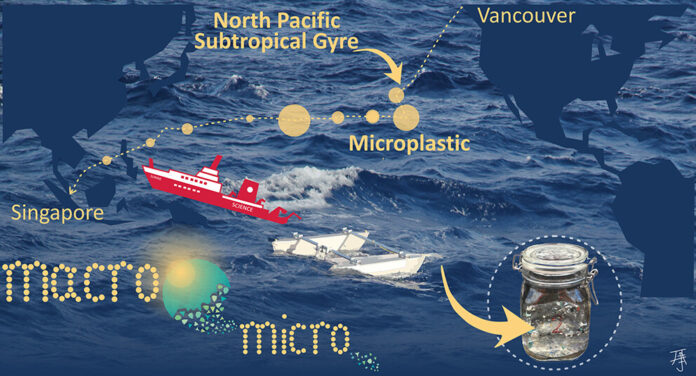Plastic, plastic everywhere and far too much to drink. This parody based on a line from Samuel Taylor Coleridge’s poem, The Rime of the Ancient Mariner, illustrates a growing planetwide threat.
The world has a plastic problem that we are late to the table to address. We have an ocean being filled with plastic and we are filling ourselves with it as well. Exposure to microplastic and nanoplastic (MNPs) is a health problem. MNPs are used widely in products. They are in the water we drink, and getting into our foods.
An observational study published in the New England Journal of Medicine recently describes the danger of MNPs found in plaque lining the carotid arteries of people. The study involved 304 patients and showed that 257, between ages 18 and 75, with asymptomatic artery disease had measurable levels of MNPs in their carotid arteries. Of these 58% had polyethylene and 12% had polyvinyl chloride in the plaque. Electron microscopy revealed visible, jagged-edged embedded MNP particles. The study concluded that those with detectable MNP levels were at a 4.5 times higher risk of heart attack or stroke at 34 months follow-up than those with no MNPs detected. Besides MNPs in arterial plaque, other studies have found plastic in breast milk, urine, blood, and lungs.
Microplastics today are everywhere. We are finding them in the deepest parts of the ocean and at the top of Mount Everest. It should be no wonder, therefore, that microplastics have invaded us.
Speaking of the ocean, the Great Pacific Garbage Patch in the North Pacific Ocean is a collection of marine debris the size of Texas and much of it is plastic. It is a collection of visible floating trash, microplastic and nanoplastic that has accumulated with origins from the countries of the Pacific Rim including North and South America, and Asia.
In 2019, the Helmholtz Centre for Environmental Research, working with the Alfred Wegener Institute, conducted a five-week expedition across the Pacific Ocean and found significant amounts of plastic waste in marine protected areas. These sites were in addition to the Great Pacific Garbage Patch.
Following a route drawn up by the SCUD (Surface Currents from Diagnostics) model, created at the Asia-Pacific Data-Research Center at the University of Hawaii, the expedition gathered surface water samples from Vancouver to Singapore (see image at the beginning of this article). The study noted wherever it went there was plastic. No sampling came up empty indicating the plastic pollution problem is much worse than previously thought.
What were the methodologies chosen for sampling? The first was an eye survey by teams of two scientists stationed on deck throughout the transit. The second used nets with mesh sizes of 0.3 millimetres that were towed to do sampling at nine locations. Those conducting the study noted an abundance of degraded smaller plastic fragments suggesting further degradation was likely which would mean large amounts of MNPs present. The limitations of the methodologies used meant MNPs were not captured.
One can assume MNPs were present throughout the ocean environment traversed. The amount and volume is unknown. If MNPs were abundant in the surface waters of the Pacific, what kind of threat did they pose to ocean life considering the noted threat to humans as described above in the New England Journal of Medicine study?
In 2022, the United Nations began working on a global plastic pollution agreement that will become legally binding this year. Called the Global Partnership on Plastic Pollution and Marine Litter, it is creating a database to track the lifecycle of plastic, analyze environmental, biological, and socio-economic impacts, look at technological innovation, share financial and capacity-building resources, and list action plans across the planet. Among the many resources created so far are a marine microplastics database and pollution map, a marine litter database and litter watch, a global plastic watch and more.
In 2022 the World Health Organization published a 156-page document covering dietary and exposure to MNP guidelines. I wonder, therefore, why the United Nations hasn’t incorporated MNPs into its global partnership strategy.









